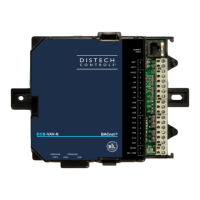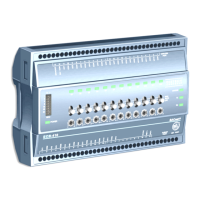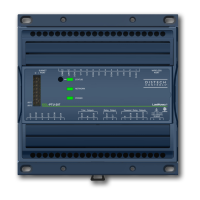34 ECB-VAVS Preloaded Applications
Configuring Space Temperature Settings
The
Setpoints Configuration
subsection contains the heating and cooling setpoints for the occupied,
standby and unoccupied modes. The table below gives a brief description of each type of setpoint.
Figure19: Setpoints Configuration Subsection
Setpoint
(heating/cooling)
Description
Occupied
The limits between which the temperature is to be maintained by the controller when it is
in Occupied mode. This temperature range should be comfortable to building occupants.
Standby
The limits between which the temperature is to be maintained by the controller when it is
in Standby mode. In Standby mode, the temperature is usually allowed a larger amount
of variance than in Occupied mode. Still, it is maintained at a value close enough to the
occupied setpoints so that it can be varied quickly for occupancy.
Unoccupied
The limits between which the temperature is to be maintained by the controller when it is
in Unoccupied mode. If the temperature passes these limits, the system reacts to bring
the temperature back within these limits. In Unoccupied mode, the space temperature is
usually allowed a larger amount of variance than in Occupied mode, thereby lowering
operating costs.
Configuring Miscellaneous Parameters
The
Miscellaneous Configuration
subsection groups two miscellaneous parameters that are also used
to configure the VAV's preloaded applications.
Figure20: Miscellaneous Configuration Subsection
Parameter Description
Communication Failure Delay
Set the delay in seconds in case of communication failure (120 seconds or more is
allowed).
Pulse Width Modulation Period
(Triac)
Set the triac pulse width modulation period. This is relevant to the heat type output code
when it is set to PWM Triac.
Using the dc gfxApplications
